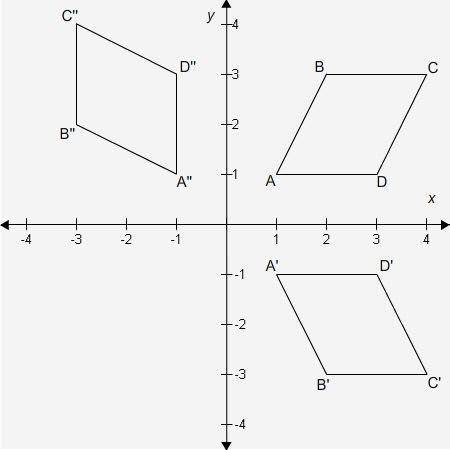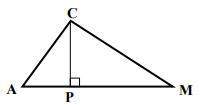
Mathematics, 21.09.2020 18:01, addiestreets
The figure shows three parallelograms: ABCD, A′B′C′D′, and A″B″C″D″.
Polygon ABCD is _ to create parallelogram A’B’C’D’
Choices for blank one are: Reflected across the Y-Axis, rotated 90 degrees clockwise about the origin, reflected across the X-axis or rotated 270 degrees clockwise about the origin
Polygon ABCD is_ to create parallelogram A”B”C”D”
Choices for blank 2 are
Reflected across the y-axis
Rotated 90 degrees clockwise about the origin
Reflected across the x-axis
Rotated 270 degrees clockwise about the origin


Answers: 2
Other questions on the subject: Mathematics

Mathematics, 21.06.2019 17:30, alexandroperez13
Monthly water bills for a city have a mean of $108.43 and a standard deviation of $32.09. find the probability that a randomly selected bill will have an amount greater than $155, which the city believes might indicate that someone is wasting water. would a bill that size be considered unusual?
Answers: 2

Mathematics, 21.06.2019 19:50, gomez36495983
Raj encoded a secret phrase using matrix multiplication. using a = 1, b = 2, c = 3, and so on, he multiplied the clear text code for each letter by the matrix to get a matrix that represents the encoded text. the matrix representing the encoded text is . what is the secret phrase? determine the location of spaces after you decode the text. yummy is the corn the tomato is red the corn is yummy red is the tomato
Answers: 2

Mathematics, 21.06.2019 21:30, luckilyalexa
Your company withheld $4,463 from your paycheck for taxes. you received a $713 tax refund. select the best answer round to the nearest 100 to estimate how much you paid in taxes.
Answers: 2

Mathematics, 21.06.2019 21:30, gonzalezashley152
In a test for esp (extrasensory perception), the experimenter looks at cards that are hidden from the subject. each card contains either a star, a circle, a wave, a cross or a square.(five shapes) as the experimenter looks at each of 20 cards in turn, the subject names the shape on the card. when the esp study described above discovers a subject whose performance appears to be better than guessing, the study continues at greater length. the experimenter looks at many cards bearing one of five shapes (star, square, circle, wave, and cross) in an order determined by random numbers. the subject cannot see the experimenter as he looks at each card in turn, in order to avoid any possible nonverbal clues. the answers of a subject who does not have esp should be independent observations, each with probability 1/5 of success. we record 1000 attempts. which of the following assumptions must be met in order to solve this problem? it's reasonable to assume normality 0.8(1000), 0.2(1000)%30 approximately normal 0.8(1000), 0.2(1000)% 10 approximately normal srs it is reasonable to assume the total number of cards is over 10,000 it is reasonable to assume the total number of cards is over 1000
Answers: 1
Do you know the correct answer?
The figure shows three parallelograms: ABCD, A′B′C′D′, and A″B″C″D″.
Polygon ABCD is _ to create pa...
Questions in other subjects:

Geography, 16.09.2019 07:10

Medicine, 16.09.2019 07:10

Mathematics, 16.09.2019 07:10

Computers and Technology, 16.09.2019 07:10


History, 16.09.2019 07:10




Mathematics, 16.09.2019 07:10







